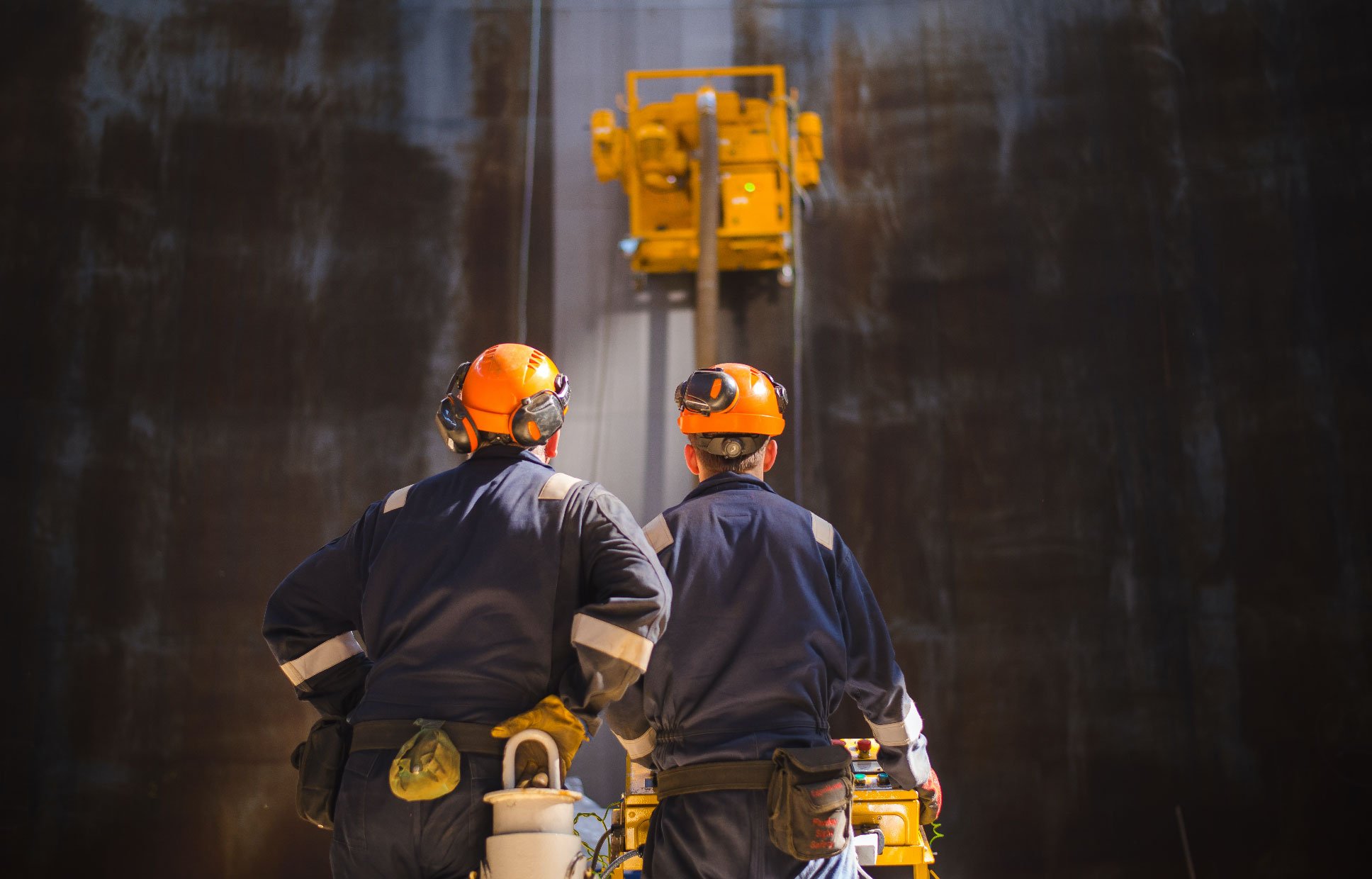When it comes to grinding and polishing concrete, many of you may know that it can be done wet, or dry.
It is obvious that different circumstances require different actions and decisions, and different people have different preferences; which is why some people prefer the wet process and some prefer the dry process.
This blog is going to take a closer look at each option and discuss when and why they might be used.
THE WET PROCESS
The Wet process is the oldest way of grinding and polishing concrete. Many people prefer it for the simple reason that it has been around the longest, and they learned to grind and polish concrete using this method.
The wet process uses water, which is relatively accessible.
The water cools the diamond tooling by acting as a lubricant to reduce friction. Depending on the tooling you’re using, this can help extend the life of your tooling by reducing the possibility of melting the resin or having it glaze over.
It also helps reduce dust exposure by wetting it down before it becomes airborne. This means that you are protected from breathing in the toxic dust particles, like Silica dust, that are exposed during the grinding process.
Although using water does help prevent the user from being exposed to large amounts of dangerous dust particles, it leaves a slurry like paste which needs to be cleaned up and disposed of appropriately. In some locations and instances, the slurry can be recycled to be used for things like road mix.
There are a few reasons people prefer wet grinding and polishing vs. dry, but there are also a few disadvantages that have caused some concern.
- Many feel the large amounts of water used for larger jobs when wet grinding or polishing, can be very wasteful if used in situations where dry grinding is possible. With the rising amount of globalized water issues, it seems like an unnecessary option for many situations.
- It's very difficult to achieve the same shine with wet polishing as you can with dry, so for situations like decorative flooring, or when you're looking for a high shine finish, using the dry method is a much better option.
- Although wet grinding does help to keep the operator safe from dust exposure, the leftover slurry is time-consuming to clean up and not always easy to dispose of. As a result, environmental issues are an increasing concern, and efficient disposal of the slurry caused by wet polishing is becoming somewhat of an issue.
- If you are applying an epoxy coating after grinding, it is critical to allow the slab to completely dry before application as moisture will cause an adhesion failure in the epoxy.
THE DRY PROCESS
Grinders and Polishers are now compatible with Dust Extraction Systems that can be attached right to the machine and collect the dust as it’s being made. Appropriate dust extraction systems with certified HEPA filters will ensure that the operator won't be exposed to all of the dangerous respirable silica dust.
Not only does this ensure a safe work environment but it also cleans as you work, so you have an even, clean surface for grinding and polishing, and it eliminates the extensive cleanup after you’re done; saving you time and money.
Many agree that the wet process unnecessarily consumes a lot of water, making it an environmental concern, and opt for the dry process for this reason.
Furthermore, you get a much better shine and finish when using the dry process, it’s impossible to get the same finish when using water.
When using a dust extraction system instead of water, you don't have a slurry to deal with when you're finished. Therefore you're significantly reducing the amount of cleanup, and it will be easier to dispose of the dust and debris quickly, efficiently and safely making it a much better option from a business standpoint.
Some claim that if the concrete is super hard it is still best to use the wet method to start, and switch to dry after the first few steps to prevent tooling from glazing over. However, with the new technology, manufacturers have been able to create tooling for hard concrete that withstands the temperatures and won’t melt or glaze over.
If you’ve properly tested the hardness of the concrete and are using the appropriate tooling, you shouldn’t have any issues.
Some believe that the wet process is a lot less expensive and affordable because a dust extraction system is adds to equipment cost.
If this is something you're concerned about, it's important to remember that, dust extraction equipment can often be rented to save some money if the initial cost to purchase is not within your budget. Secondly, the amount of time and money you’ll save in clean up, will pay for the dust extraction system faster than you may think.
SO WHICH IS BETTER?
The choice between wet and dry grinding and polishing is often personal preference. Sometimes people will choose to do a bit of both by starting with wet and switching to dry, but it still won’t turn out quite the same because the slurry created by wet grinding is composed of abrasive particles, which will affect your process. Plus you’ll still have to clean up the slurry in-between the grinding and polishing steps, which takes time. So not only will it take more time and effort, but you won’t end up with the same high standard finish.
Technically, with the advancements in tooling technology, there is no longer an advantage to the Wet process. Again, it really comes down to preference, but most people are moving towards the Dry process for the various reasons listed above.
If you are unsure about what to do or how to begin a job, talk to you dealer or the equipment manufacturer.


 By
By